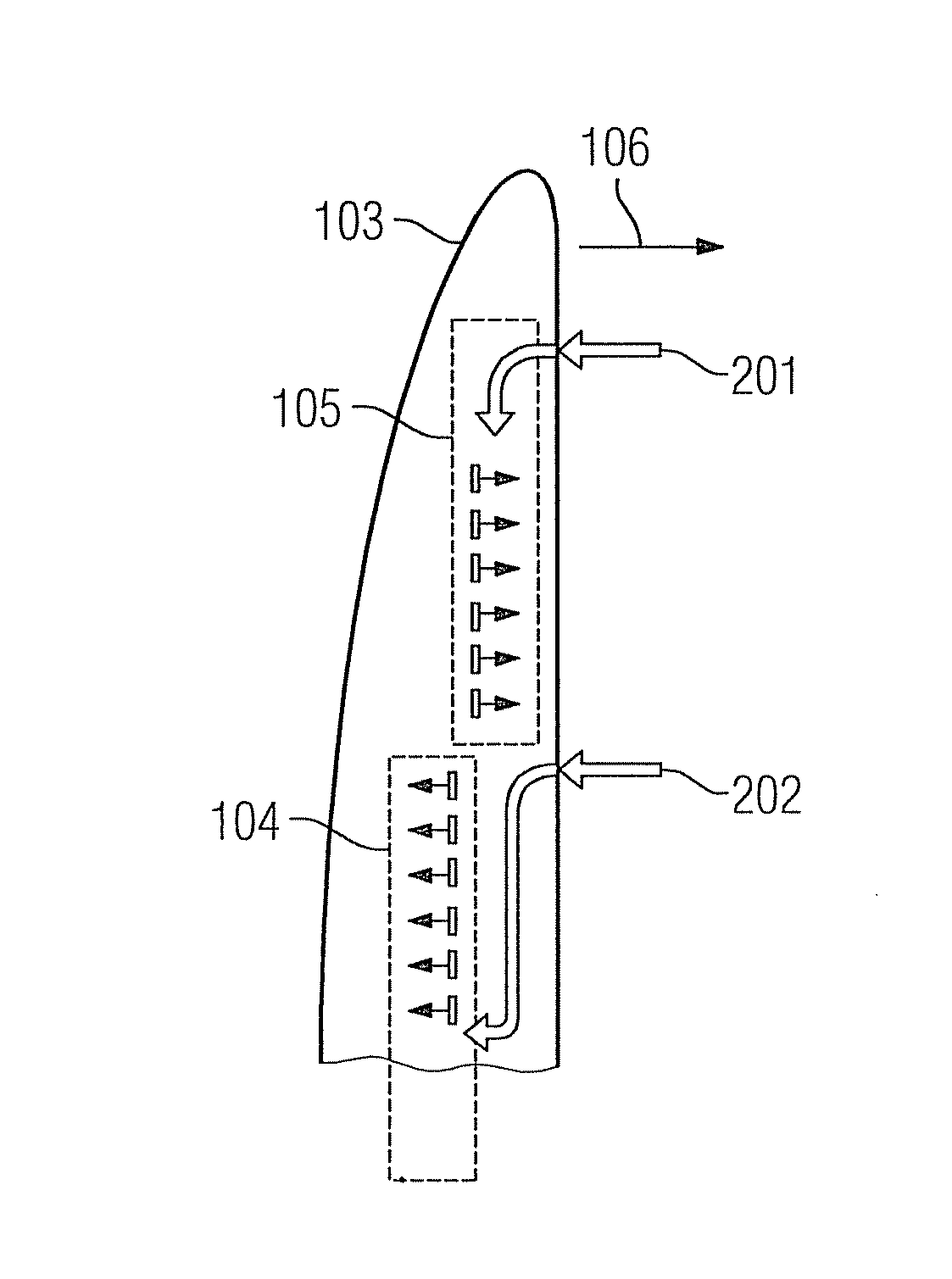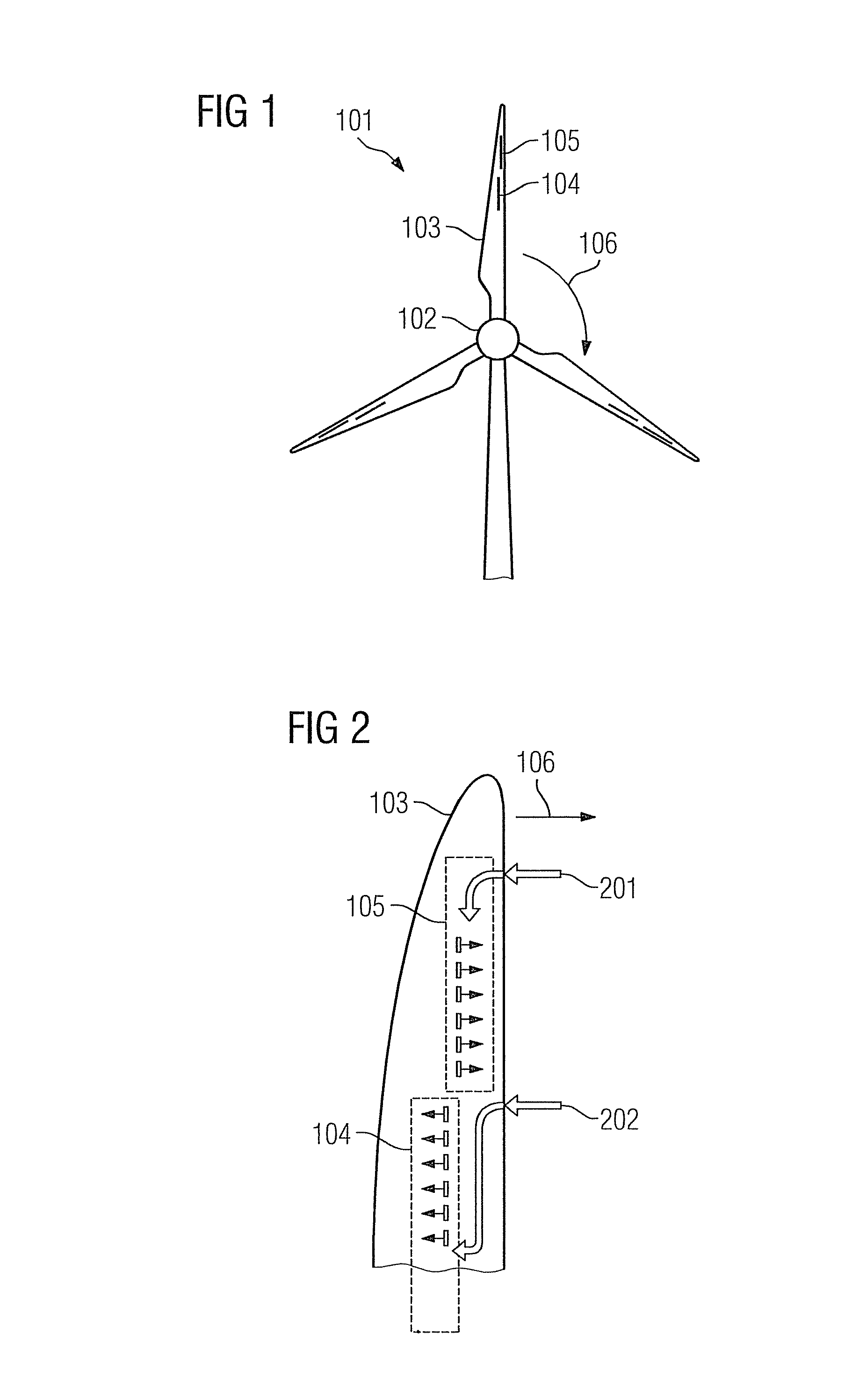Control of a wind turbine, rotor blade and wind turbine
a technology of rotor blades and wind turbines, which is applied in the direction of machines/engines, liquid fuel engines, transportation and packaging, etc., can solve the problems of rotor blades that are easily damaged, etc., to prolong the service life of the wind turbine system, reduce inverse stresses, and reduce particularly strong stresses
- Summary
- Abstract
- Description
- Claims
- Application Information
AI Technical Summary
Benefits of technology
Problems solved by technology
Method used
Image
Examples
Embodiment Construction
[0078]The present approach proposes providing an actuator to adjust the current on a rotor blade, wherein a strategy for setting the flow may be learned and in accordance with this strategy the actuation may be controlled.
[0079]The strategy considers in particular at least one of the following parameters:[0080]a stress on the rotor blade;[0081]a deflection of the rotor blade;[0082]a blade pitch;[0083]a rotor speed;[0084]a turbine alignment relative to the wind;[0085]a wind speed;[0086]shear winds;[0087]an air density;[0088]a temperature;[0089]turbulences or conditions which may result in turbulences.
[0090]The preceding parameters may be measured directly or derived from measured variables. It is also possible for at least one parameter to be learned and / or modeled e.g. based on (at least one) other available parameters or measured variables.
[0091]On the basis of the cited parameters, an (if necessary non-linear) model may be used in order to introduce a pulsing or (essentially) cont...
PUM
 Login to View More
Login to View More Abstract
Description
Claims
Application Information
 Login to View More
Login to View More - R&D
- Intellectual Property
- Life Sciences
- Materials
- Tech Scout
- Unparalleled Data Quality
- Higher Quality Content
- 60% Fewer Hallucinations
Browse by: Latest US Patents, China's latest patents, Technical Efficacy Thesaurus, Application Domain, Technology Topic, Popular Technical Reports.
© 2025 PatSnap. All rights reserved.Legal|Privacy policy|Modern Slavery Act Transparency Statement|Sitemap|About US| Contact US: help@patsnap.com



